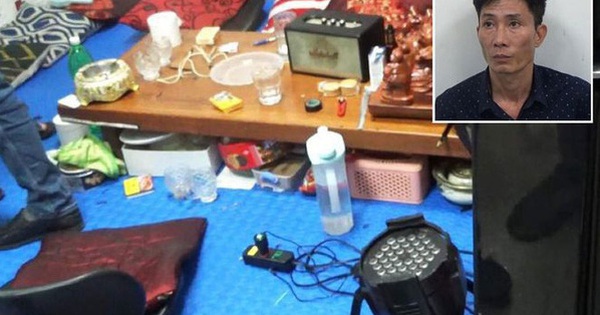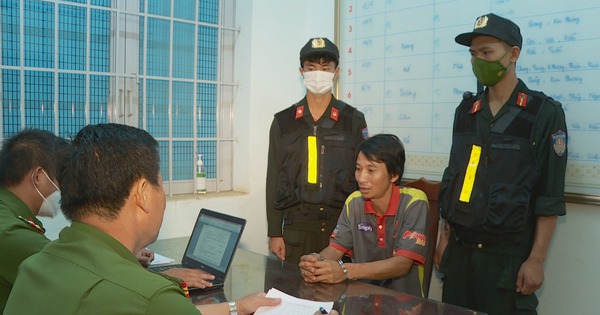‘Highway killer’ plays the role of a hitchhiking driver
South AmericaLarry Eyler is one of the worst serial killers, targeting vulnerable young gays.
Larry Eyler was born on December 21, 1952 in Crawfordsville, Indiana. Larry’s mother was married four times, but both were married to an alcoholic who often beat Larry’s four siblings. The stepfather is also often abusive. At school, Larry was always bullied because his family was poor and his parents divorced.
The trauma caused by constant physical and mental abuse caused Larry to often explode with anger and have to go to psychological treatment for 6 months. Examinations revealed that Larry had severe feelings of insecurity and fear of abandonment.
Larry discovered he was gay at puberty, however, he had a conflicting mentality with his sexual instincts, both attracted and wanted to deny. He once confided that he struggled to accept his sexual orientation and struggled with a deep sense of self-loathing.
While working at a shoe store, Larry became famous in the gay community with his beautiful body, calm figure. However, those who have had sex with Larry describe him as having sadistic preferences, as if there are two personalities in one person.
In 1974, Larry moved in with Robert Little, 38, a professor at Indiana University. Their relationship is close but very pure, Larry considers Robert more like a father.
On August 3, 1978, Larry gave Craig Long, 19 years old, a hitchhiking and solicitation. After Craig refused, he thrust a knife into the boy’s chest, drove off into a rural field, ordered Craig to undress and handcuffed and tied his ankles. Craig fled from the pickup while Larry was undressing, but was chased by him and stabbed in the chest with a knife. Craig fell to the ground pretending to be dead, crawled to a nearby house and was helped to call an ambulance.

Larry Eyler upon his arrest. Image: Forensicyard
Larry was arrested after the incident. He said he just accidentally stabbed Craig. Searching the vehicle, police found a hunting knife, a metal whip, a butcher’s knife, handcuffs, tear gas and a sword in the back seat.
Larry was charged with violent assault, but was later donated $10,000 by friends to bail him out. Before the court date, Robert offered to pay Craig $2,500 to not press charges against Larry. Therefore, he was acquitted and only had to pay 43 USD in court fees.
In August 1981, Larry established a long-term relationship with a 20-year-old married man named John Dobrovolskis. John’s wife is very tolerant of her husband’s sexual orientation, even letting Larry live with their family on weekdays.
While working as a house painter in town, Larry lived with the Dobrovolskis in Chicago, Illinois. He also worked as a liquor store clerk in Greencastle, Indiana on Saturdays. As a result, Larry often travels between the two states, and also lives at Robert’s place for the weekend.
From 1982 to 1984, 21 bodies were found scattered along both sides of the highway or dumped in cornfields near major bypasses. The victims were found with trousers and underwear around their ankles, subjected to various forms of sadism and sexual assault. All were bruised, scratched and had knife marks on their bodies. Victims’ shirts and wallets often disappear.
In January 1983, a special task force was formed and found that crimes could be committed by the same killer with a crazy mentality. Many of the victims had serious head injuries, suggesting the perpetrator continued to stab after they died. Victim Steven Crockett, 19, was stabbed 32 times, four of them in the head. Some of the victims were as young as 14 years old.
The investigation team speculated the perpetrator was most likely a white male in his late 20s or early 30s, physically strong because the deep marks on the wrists of many of the victims indicated they struggled to fight back. being tied and handcuffed. He is likely psychologically disturbed, is struggling with his sexuality due to guilt about homosexuality and killing victims to cover up the crime. The dissection of the victims also serves this purpose. This guy is nicknamed “Highway Killer”.
Despite speculation about the killer, the investigation team seems to have reached a dead end, unable to find out exactly who the killer is.
On September 30, 1983, Larry was arrested for violating traffic laws. The police discovered a young hitchhiker in the car with Larry and arrested them both. After questioning, Larry was accused of soliciting young men for sexual purposes. His truck was searched, revealing the rope in the trunk, along with handcuffs, a hammer, two baseball bats, a mallet and surgical tape. The police became suspicious and informed the task force responsible for investigating the “Highway Killer”.
Larry almost coincides with the criminal characteristics as speculated by the task force. He also admitted to moving back and forth between the two areas where most of the bodies were found.
Investigators question Larry about the murders, but he refuses to cooperate. After a forensic examination of the truck, authorities were forced to release him.
Fearing that he would throw away important evidence, the police obtained a warrant to search the house Larry shared with Robert. There, they discovered a lot of indirect evidence connecting Larry to the murders. These are receipts for handcuffs, credit card statements at suspected murder sites, knives and hospital bills showing he was treated for a knife cut deep into his hand. Investigators believe that Larry is the “Highway Killer” they are looking for.
On October 29, 1983, Larry was arrested on charges of murder. The search of the house Larry lived with the Dobrovolskis also gave the police a lot of evidence.
However, due to controversy over the legality of the searches and interrogations, Larry’s bail was reduced from one million dollars to just 10,000 dollars. Robert and Larry’s family paid bail for his release in February 1984.
On August 21, 1984, a janitor discovered bodies in garbage bags at an apartment complex in Chicago – the same area Larry moved into after being accused of murder.

The police checked the trash bags containing the victim’s body. Image: Murderpedia
The victim is Daniel Bridges, 16 years old, ran away from home, working as a prostitute since the age of 12. Larry is Daniel’s last guest. He tied the boy in the apartment.
After discovering Larry lived in the apartment complex and some cleaning staff saw him at the landfill the night before his body was discovered, the police immediately arrested Larry.
In court, the prosecutor presented a variety of evidence against Larry, including his fingerprints were found both inside and outside of the trash bags where the body was found, blood stains in the apartment showed a bodies dragged across the floor, and confinement devices.
The prosecution also called on Robert and John to testify against Larry. The two men admitted they were unable to reach Larry by phone the night of the murder. Once the phone was connected, Larry warned him not to go to his apartment.
Larry was convicted of kidnapping, unlawful detention and murder of Daniel Bridges, sentenced to death in October 1986.
In 1990, Larry agreed to confess to the crime to be reduced from the death penalty to life in prison without parole.
In March 1994, Larry died in prison of AIDS. At Larry’s last request, the attorney released his confessions and provided details about each case that only the killer knew.
Larry admitted to kidnapping, raping, torturing and murdering 21 teenagers between 1982-1984, and listed their names in his confession before his death.
Larry claimed the motive for murder was in part to clear the mind. His victims were hitchhikers, sex workers, or random people.
Tue Anh (According to Murderpedia, Crimelibrary, ATI)
at Blogtuan.info – Source: vnexpress.net – Read the original article here



